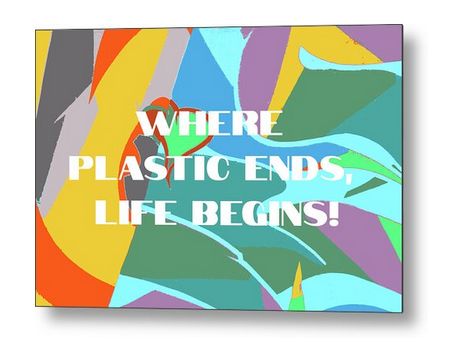In humans and animals microplastics and nanoplastics pose significant environmental and health risks due to their widespread presence and potential to enter the body through various routes. Microplastics, typically less than 5 mm in size, and nanoplastics, smaller than 1 μm, can be ingested, inhaled, or absorbed through the skin. They are found in oceans, rivers, sediments, sewers, soil, and even in table salts, posing a threat to ecosystems and human health.
These particles can accumulate in the human body and affect multiple systems, including the gastrointestinal, immune, endocrine, brain, and respiratory systems, potentially leading to chronic diseases, oxidative stress, DNA damage, organ dysfunction, metabolic disorders, immune responses, neurotoxicity, and reproductive and developmental toxicity.
Micro- and Nanoplastic is in the food we eat, the air we breathe and the water we drink!
Inhalation of microplastics and nanoplastics can cause respiratory disorders such as lung cancer, asthma, and hypersensitivity pneumonitis, while ingestion can lead to inflammatory bowel disease.
Additionally, nanoplastics can cross blood-brain barriers, the placenta, and gastrointestinal epithelium, entering systemic circulation through endocytosis.
The presence of microplastics and nanoplastics in food is primarily due to environmental contamination, and while current scientific evidence does not demonstrate that levels detected in foods pose a risk to human health, further research is needed to fully understand the extent of the impact of these particles on human health.
To reduce exposure to harmful micro- and nanoplastics, we all can take several steps:
- Buy glass water bottles and avoid plastic water bottles.
- Switch to wooden cutting boards: A study found that plastic cutting boards release microplastics, while wooden ones are a safer alternative when cleaned and disinfected properly.
- Avoid nonstick cookware: Overheating and heavy use of nonstick, Teflon-coated pans can add millions of micro and nanoplastics to food.
- Use reusable bags: Carry your own reusable bags to avoid buying food in excessive plastic packaging.
- Filter tap water: A 2019 analysis revealed that nearly 95 percent of U.S. tap water samples contain plastic fibers.
- Choose natural fibers for clothing: Synthetic fabrics like polyester and nylon release hundreds of thousands of microplastics per wash, with acrylic fabrics releasing the most.
- Opt for natural fibers like cotton, silk, wool, and hemp.
- Use laundry bags and filters: Devices like microfiber-catching laundry bags and exterior filters can reduce microfiber shedding during washing.
- Use baking soda or vinegar with water for home cleaning.
- Don’t microwave in plastic, use ceramic or glass instead.
- Reduce plastic use: Avoid single-use plastics and opt for reusable items.
- Support systemic solutions: Advocate for and support legislation aimed at reducing plastic production and pollution.
These actions can help minimize your exposure to micro- and nanoplastics and contribute to reducing their presence in the environment.
Are there any Government Actions on Micro- and Nanoplastics?
The United Nations Environment Programme (UNEP) has passed resolutions aimed at preventing and reducing marine plastic litter and microplastics (MPs), addressing single-use plastic products pollution, and promoting sustainable consumption and production patterns. However, these resolutions lack specific frameworks to guide member countries, making it challenging to monitor their implementation and impact.
The World Health Organization (WHO) has called for assessments of MPs presence in the environment and their impact on human health, encouraging the development and standardization of methods for MPs measurement in water. However, the call lacks guidelines and tools for tracking implementation by countries, and most of the world’s population does not benefit from water and sewage treatments that address the problem of MPs in the long term.
Despite these efforts, there is a need for more comprehensive policies and better enforcement to address the widespread presence of micro- and nanoplastics in the environment and their potential health impacts.



